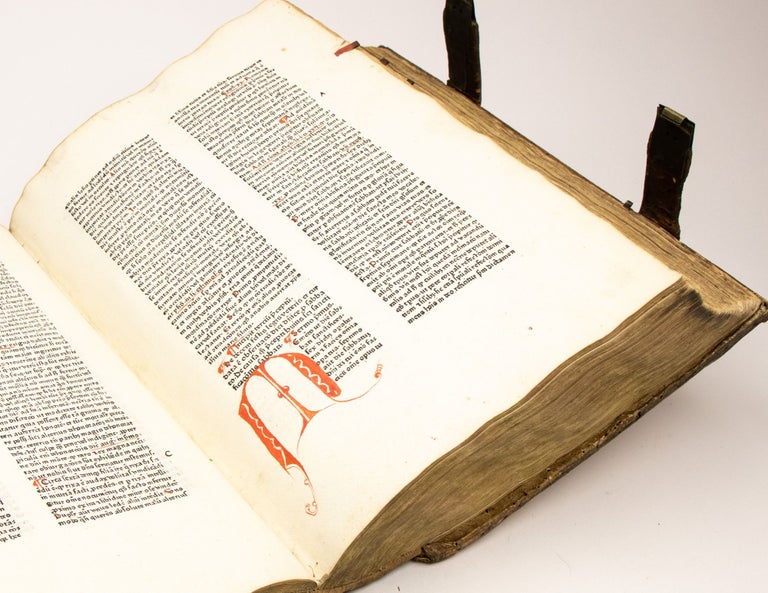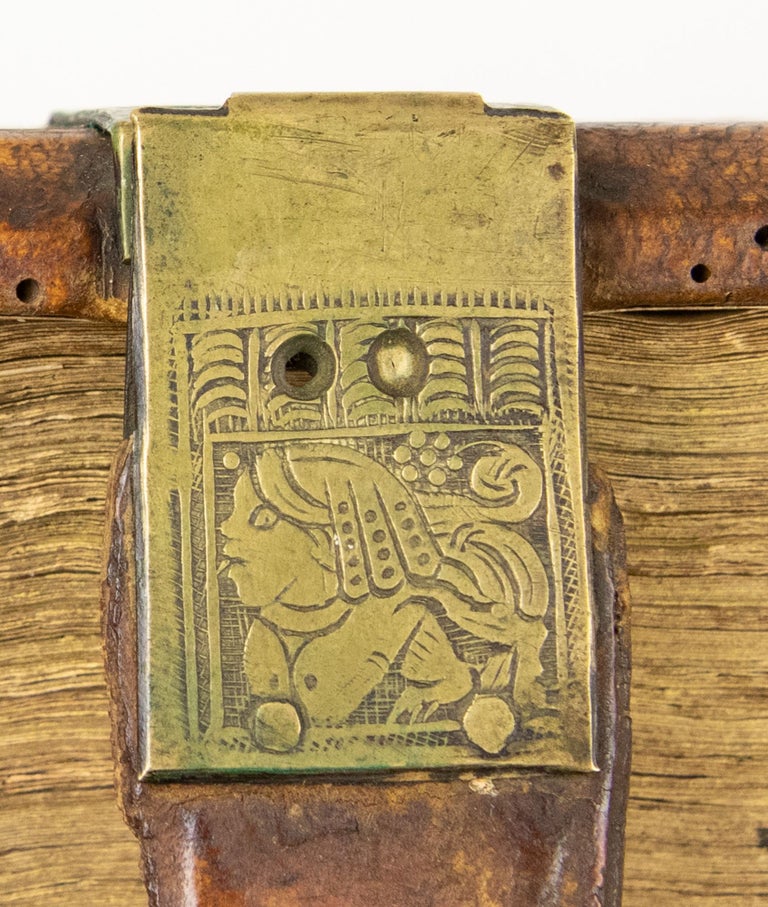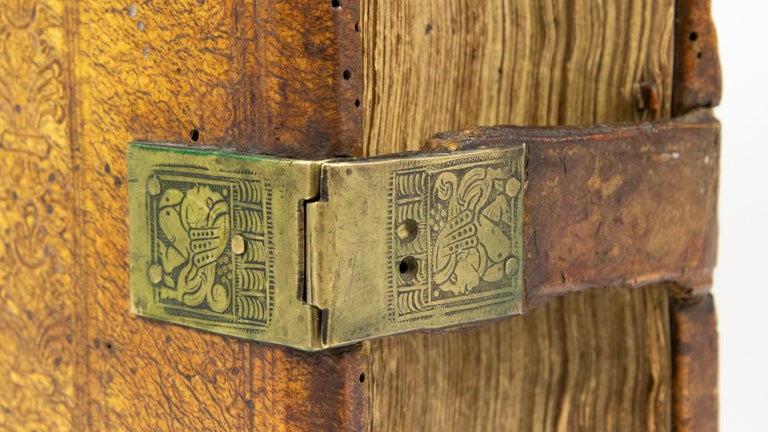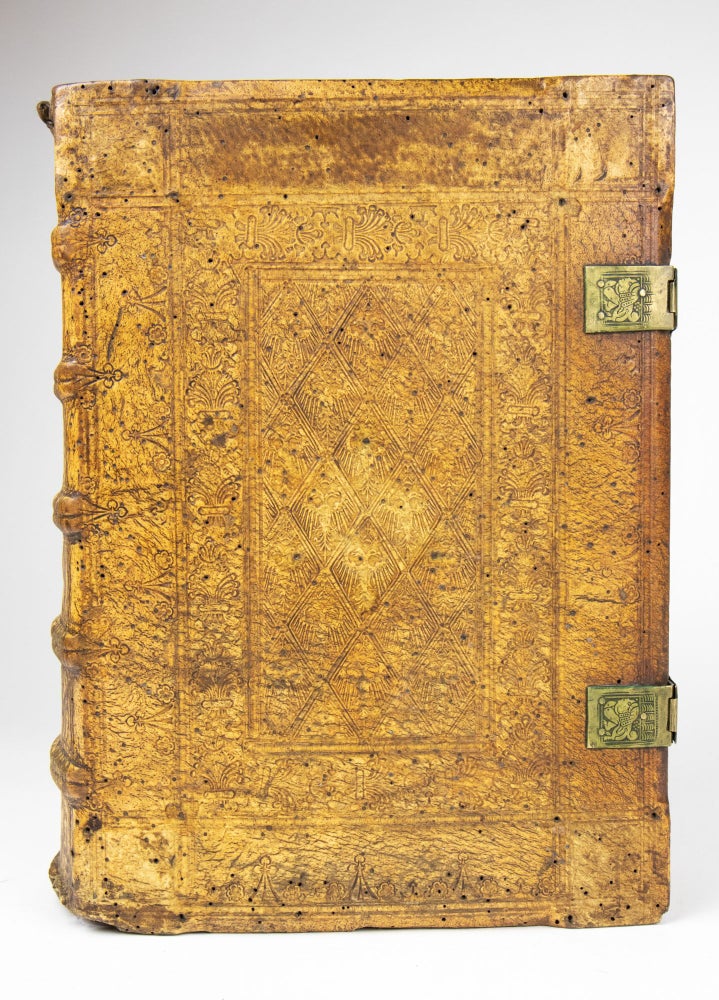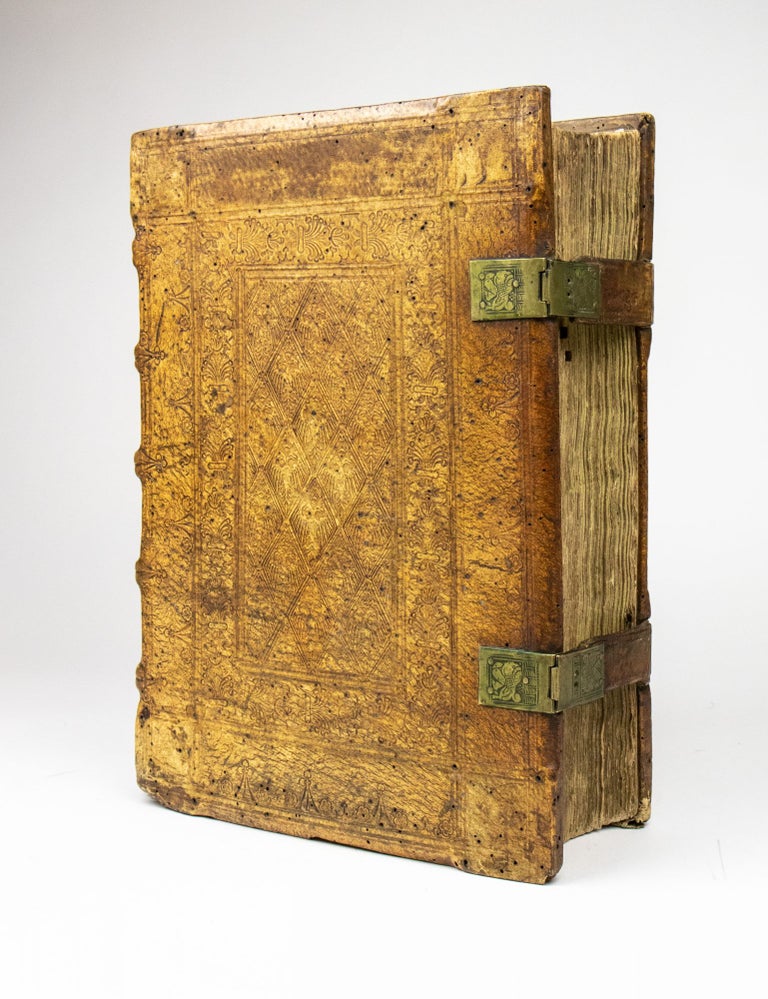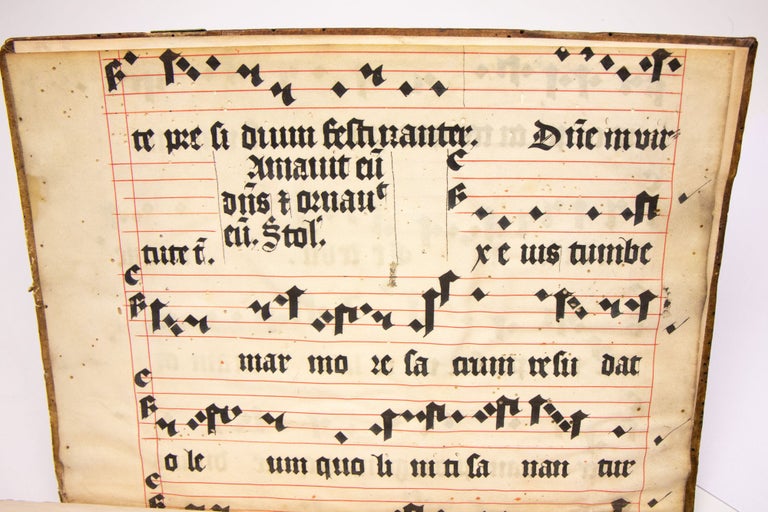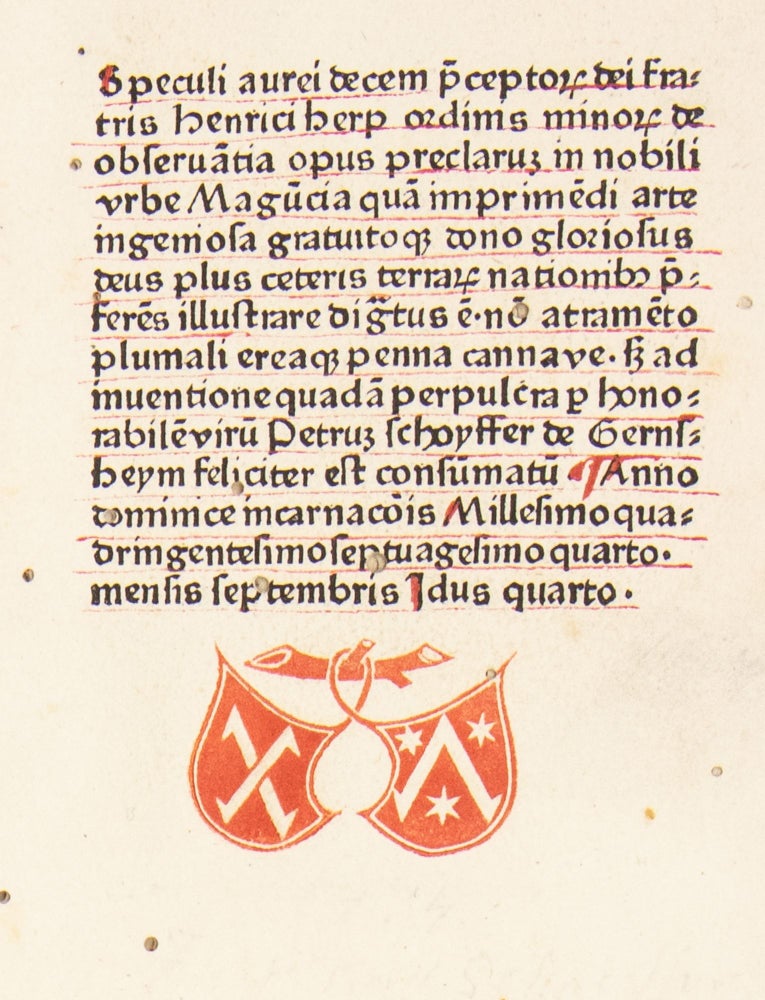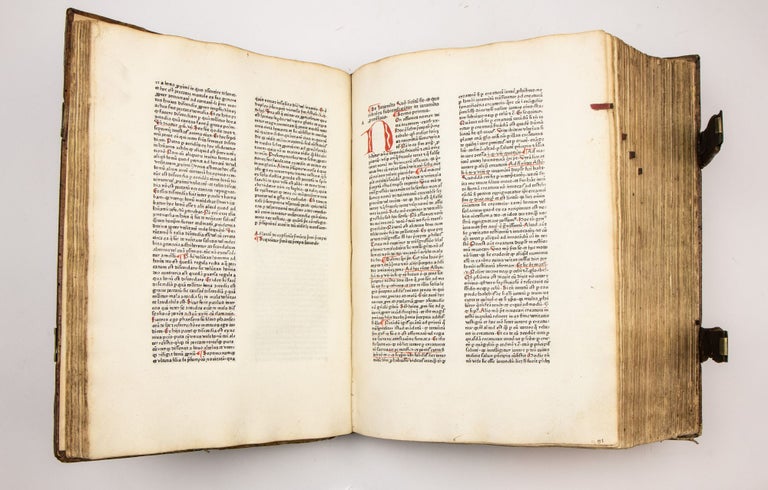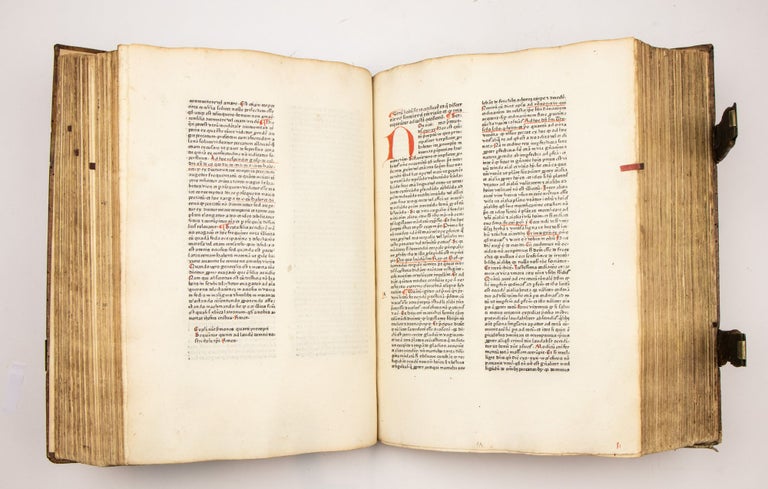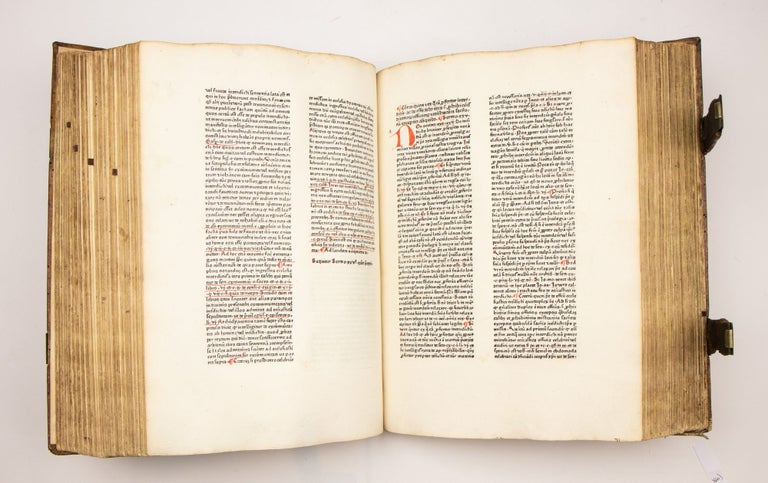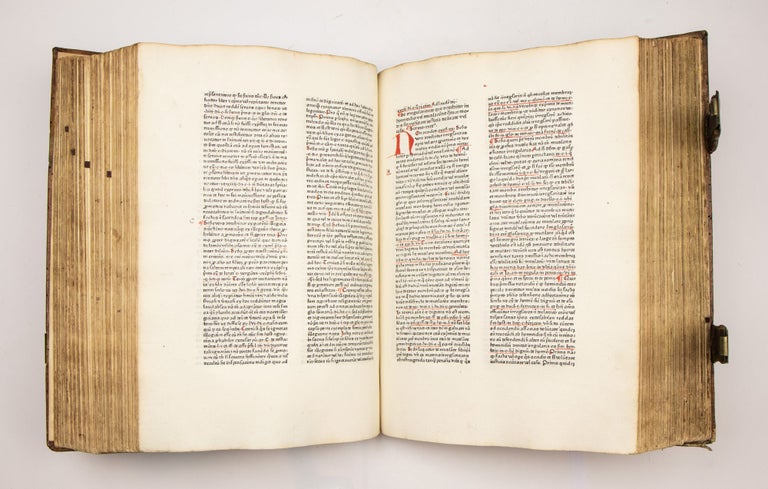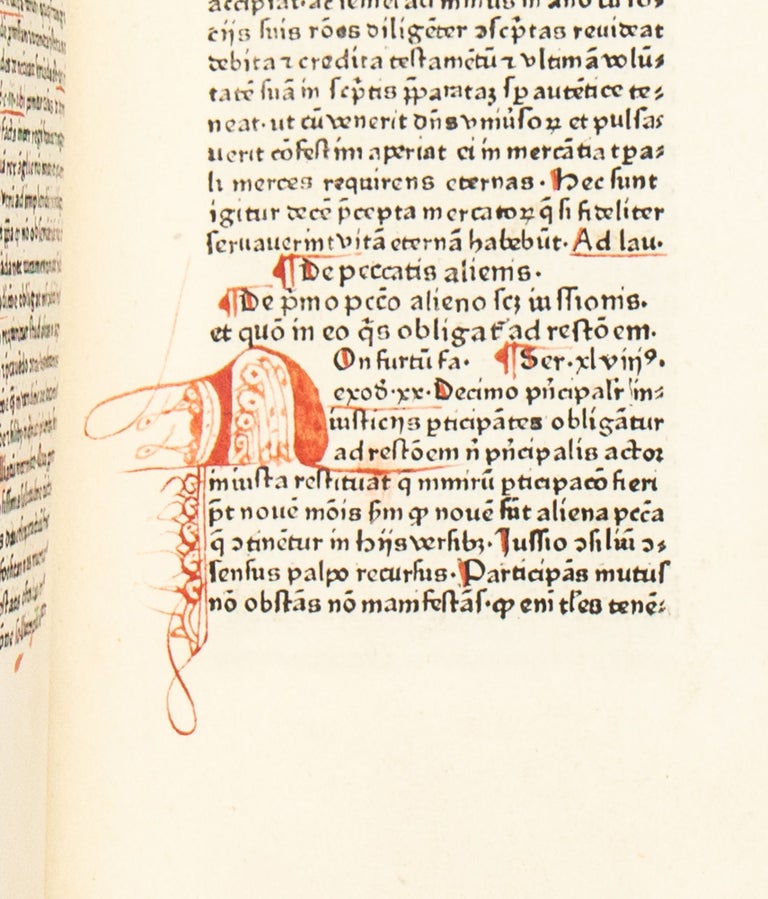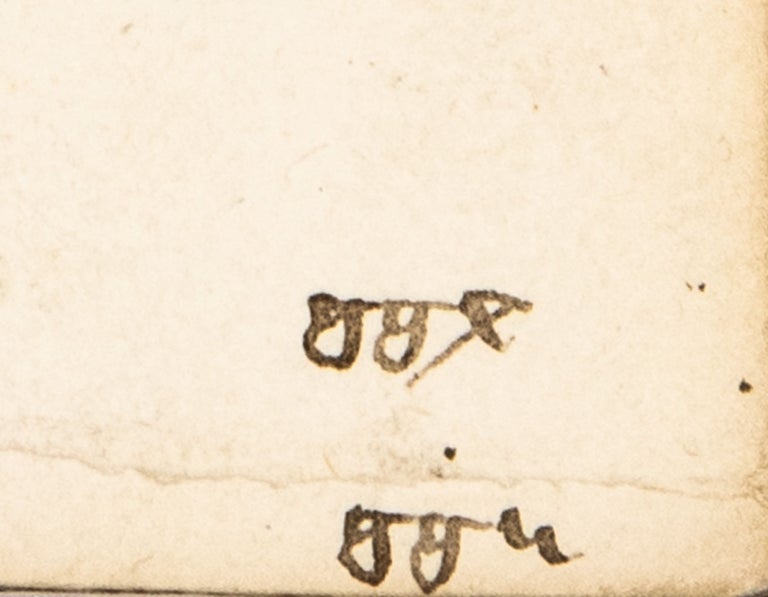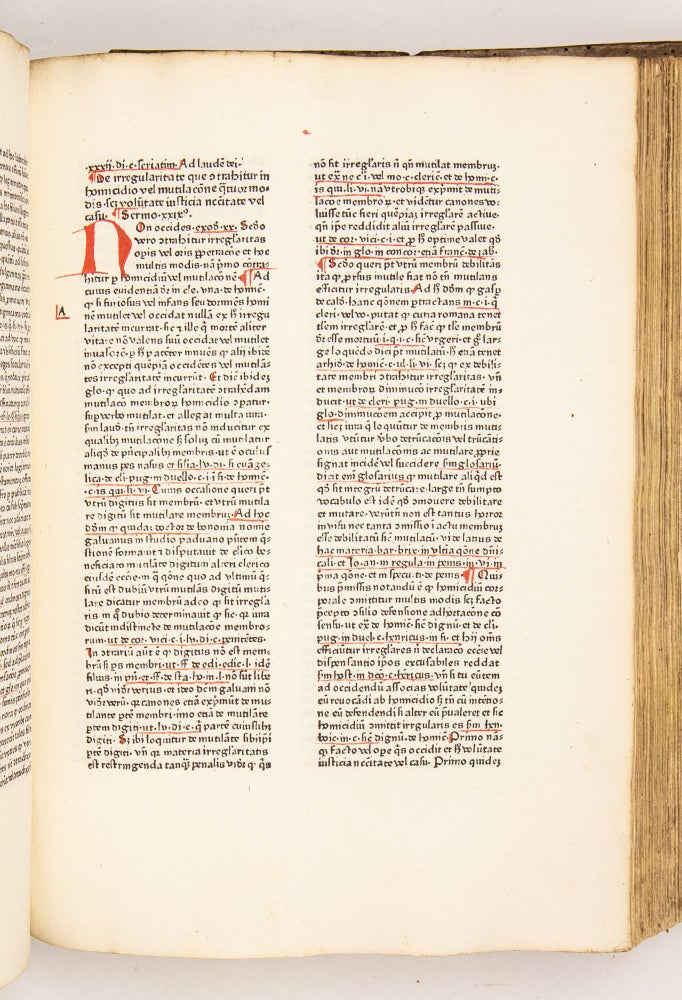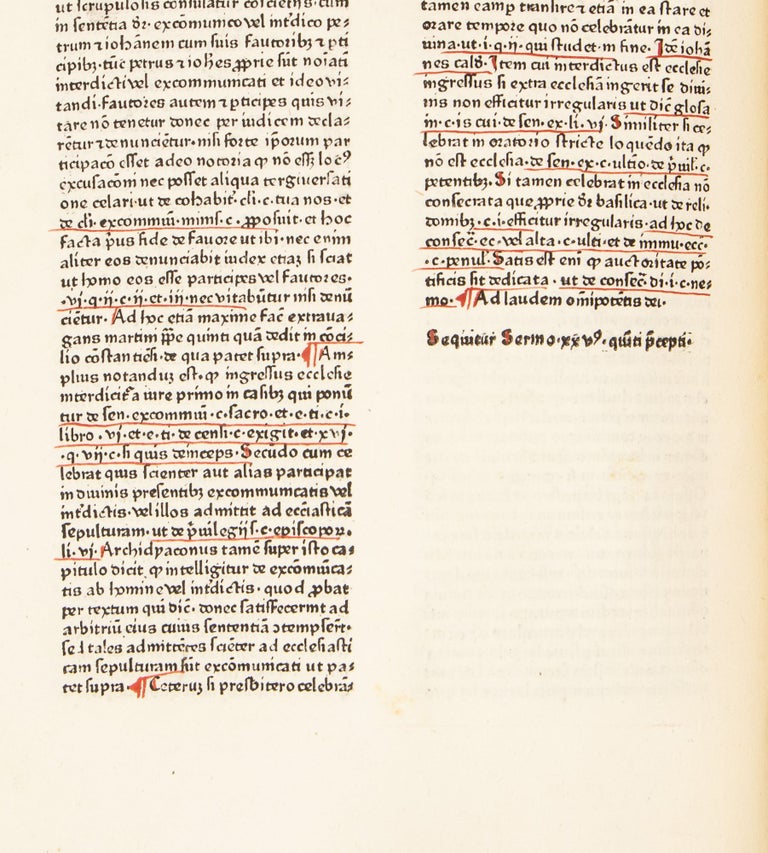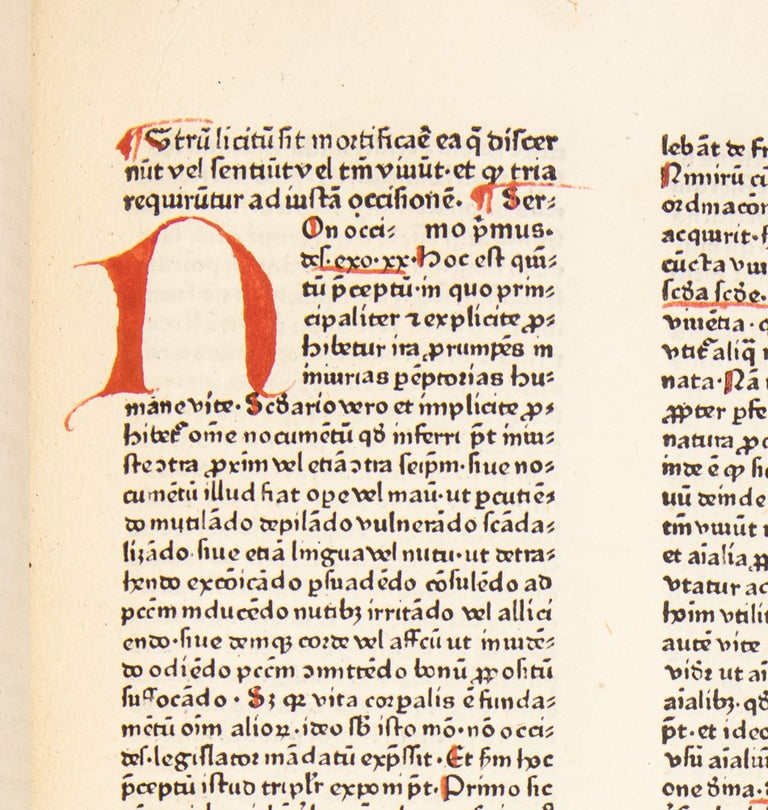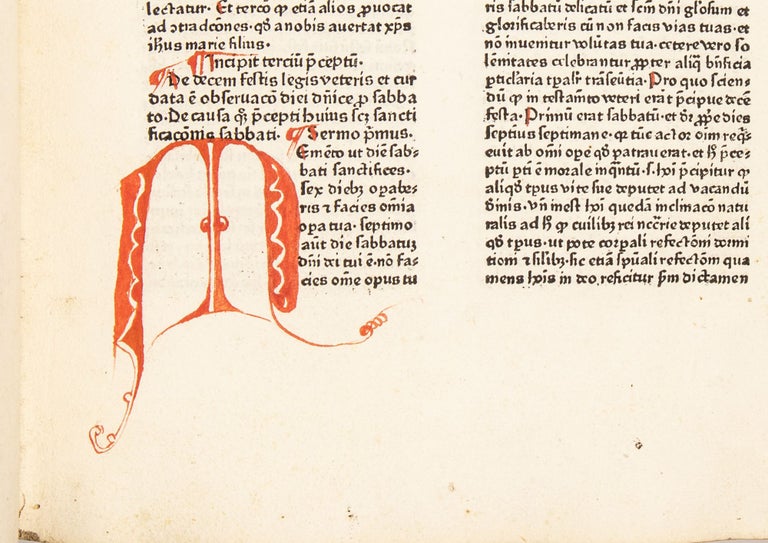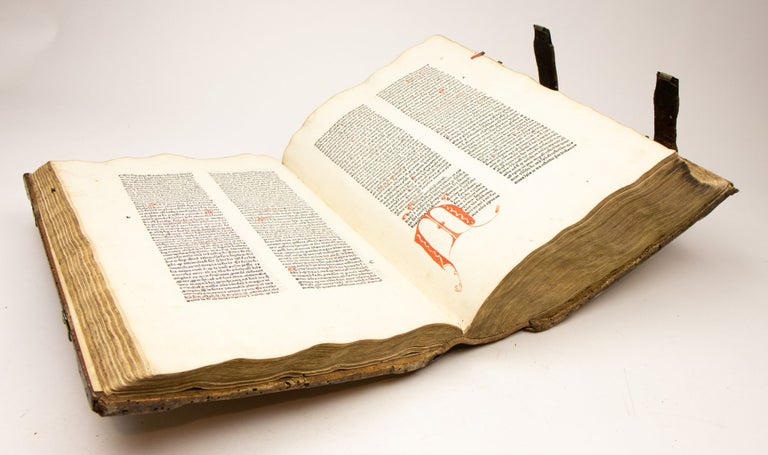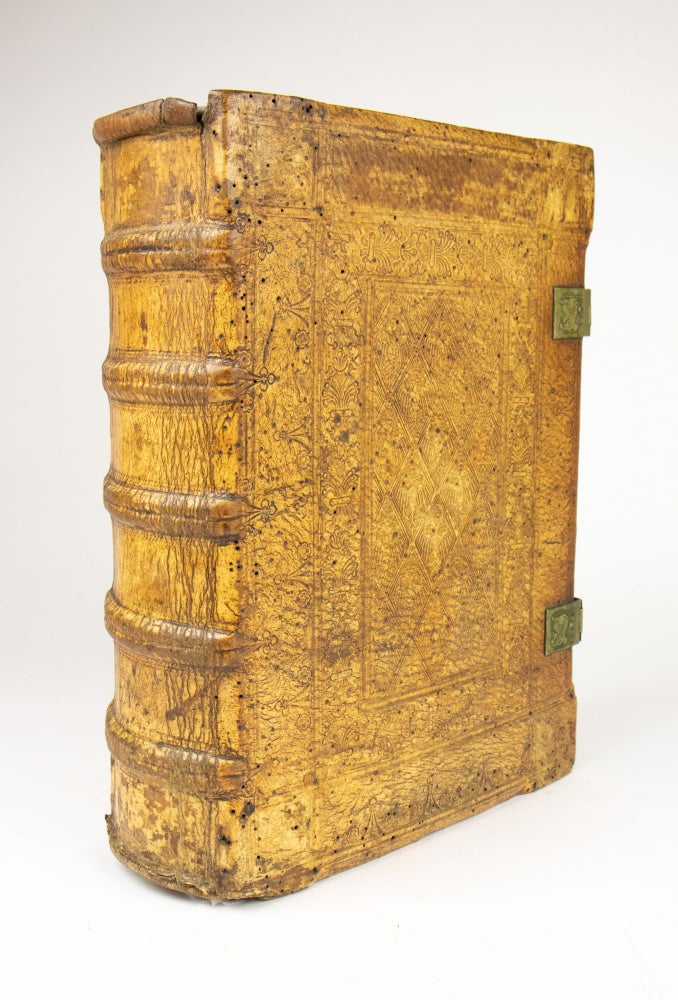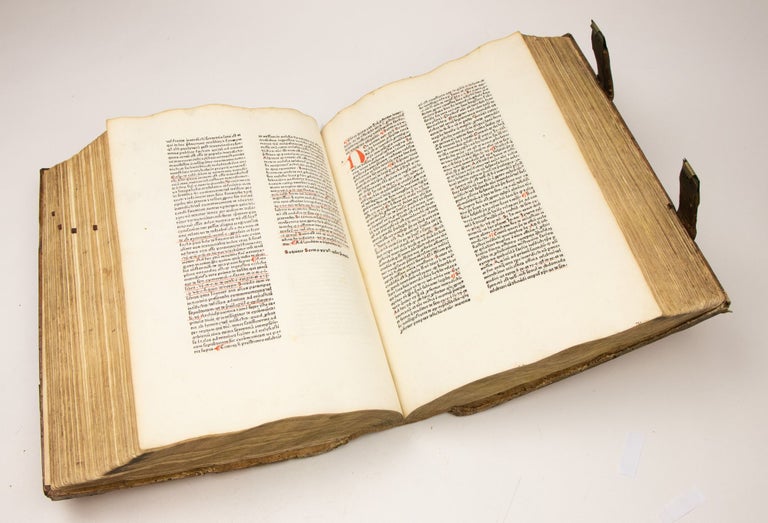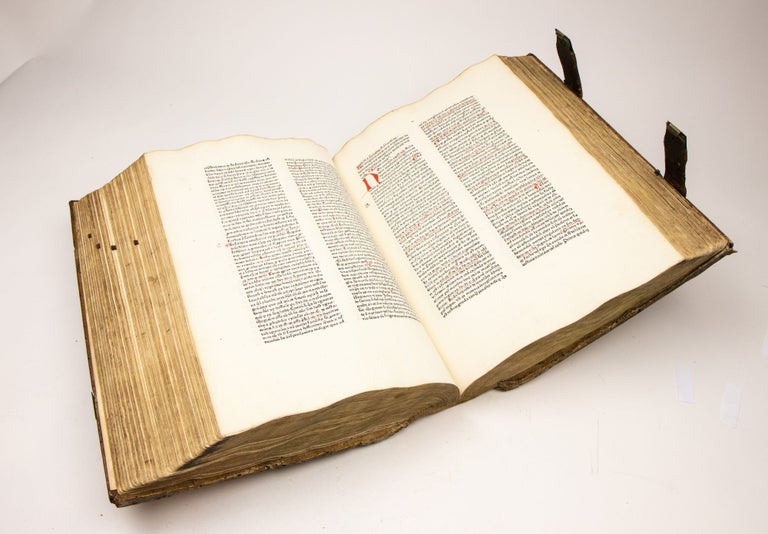Speculum aureum decem praeceptorum Dei.
Mainz: Peter Schoeffer, 10 September, 1474.
Price: $45,000.00
Median Folio: 33 x 23.6 cm. 408 lvs. Complete with first and final leaf, both blank. Collation conforms to Polain: a12, b-k10, l8, m4, n-q10 , r4, s-x10, y6+1; z10, A-C10, D6, E-N10, O6, P4+1, Q-T10, V-X8. For the variant collation, see BMC I 30. This copy with contemporary manuscript collation: a-z, aa-xx (additionally, there is some quire numbering.)
FIRST EDITION.
A fine copy, in an impressive binding, of the first edition, printed by Gutenberg’s apprentice, Peter Schoeffer. Bound in contemporary Bamberg blindstamped pigskin over wooden boards [Kyriss 006, EBDB w000078, Bamberg Minoritenkloster], with flyleaves from vellum manuscript antiphonal, brass catch-plates with sphinxes, straps and clasps intact. Wormholes to both boards, endpapers renewed, binding a little soiled.
Incipit and printer’s device printed in red. Rubricated throughout, some of the initials with flourishes, red paragraph marks and capital strokes. Text in overall fine condition with minor worming to first and last two quires, mostly little holes and two very short (1 cm) trails entering the text. Occasional fingersoiling and stains. Provenance: erased inscription on first leaf – acquired from Lathrop C. Harper, Inc, New York, 27 March 1956.
212 sermons on the Ten Commandments by the Dutch mystic Hendrik Herp, whose writings had a profound impact on later mystical writers, including Francisco de Osuna, who in turn influenced St. Teresa of Jesus. His works might also have influenced St. John of the Cross. Herp’s mysticism concerned the Inquisition, who placed his books on the Index. This edition was printed by Peter Schoeffer, who began his printing career as Gutenberg’s apprentice. Schoeffer is considered, after Gutenberg, “the most influential individual in the early history of printing in Europe.”
From 1445, Herp was a rector of the Brothers of the Common Life in Delft and, later, in Gouda, where he encouraged book production in particular. In 1450, on a pilgrimage to Rome, he joined the Franciscan Observance (the Capuchin reform) at the Convent of Ara Coeli. Upon his return to northern Europe, he served in several posts for the Franciscan Observants of the Cologne Province, including as provincial of the Province of Cologne (1470–73), then as guardian of the convent of Mechlin in present-day Belgium, where he died in 1477.
Peter Schoeffer:
“After Johannes Gutenberg (c. 1397–1468), Peter Schoeffer was the most influential individual in the early history of printing in Europe. Born about 1425 in Gernsheim, near Mainz, educated at Erfurt University, and trained as a calligrapher in Paris, Schoeffer had become involved in the new art of printing by 1455, serving as an employee of Johann Fust of Mainz, who was then financing Gutenberg’s “work of the books” – doubtless the printing of the Gutenberg Bible. As Gutenberg’s helper, later as Fust’s junior partner, and finally on his own, Schoeffer remained at the forefront of Europe’s printers for the better part of five decades, producing an impressive array of essential theological and legal editions. Before his death in 1503, he had done more than any other to introduce important publishing innovations and to set technical standards that would shape the history of the printed word…
“Peter Schoeffer’s role in the production of the Gutenberg Bible is not documented directly, but his training as a calligrapher, his close association with Fust c. 1455, and his expertise as an independent printer after Fust’s death in 1466 all suggest that he was a central participant in the early development of European printing.” (Peter Schoeffer: Printer of Mainz. A Quincentenary Exhibition at Bridwell Library, displayed from 8 September to 8 December 2003)
Among Schoeffer’s accomplishments are, together with his partner Johann Fust, of the 1457 and 1459 Latin Psalters, the 1462 Bible, and the 1465 Cicero (possibly the first printed Classical text); and, on his own, the third printing (using Gutenberg’s types) of the Mainz Catholicon (ca. 1469).
ISTC ih00039000; Goff H-39; HC 8523*; BMC I 30, with alternate collation: ?a12, b-p10, q6, r-z10, A10, B12, C-L10, M6, N10-1, O10, P6, Q-R10, S-T8 (?1 and T8 blank); BSB-Ink H-218; GW 12226; Bod-inc H-019


